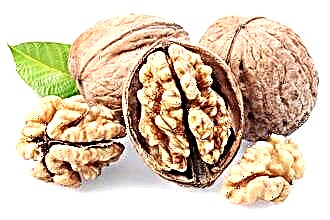When it comes to the health of a child, even the seemingly insignificant details are important. So, if he suddenly "flooded", be sure to pay attention to the color and consistency of the discharge. They may not tell you about anything, but for a pediatrician they may be one of the factors that will help you quickly make a correct diagnosis. For example, yellow snot in a child is hard to miss. This color is rather uncharacteristic. What does this symptom say and how to treat yellow snot in a child?
Causes and Symptoms
 To begin with, let's figure out why yellow snot appears in a child - the reasons that cause them and what diseases they can signal. An important point is the time when such discharge appeared. If at first liquid transparent snot flowed from the baby's nose, and then they thickened and acquired a yellow color, it means that he has been ill for at least several days, and the infection has penetrated deep into the respiratory tract. In this case, it is better to consult a pediatrician.
To begin with, let's figure out why yellow snot appears in a child - the reasons that cause them and what diseases they can signal. An important point is the time when such discharge appeared. If at first liquid transparent snot flowed from the baby's nose, and then they thickened and acquired a yellow color, it means that he has been ill for at least several days, and the infection has penetrated deep into the respiratory tract. In this case, it is better to consult a pediatrician.
If the baby has not had a runny nose before, and suddenly the child has yellow thick ones, this means that he has recently fallen ill, and his weakened immunity is not able to actively prevent the reproduction of pathogenic bacteria.
In the absence of a high temperature, you can try to cope with the disease with alternative methods of treatment. But it is imperative to pay attention to immunity and take urgent measures to strengthen it.
Bright yellow snot in a child should already be alarming - this is a sign of the subacute stage of sinusitis. The following symptoms can confirm this guess:
 increased body temperature;
increased body temperature;- frequent crying of the baby, anxiety;
- labored breathing;
- headache.
In this case, you need to go to the doctor immediately. The accumulation of pus in nasal pauses, if left untreated, can cause serious complications.
Another reason for visiting a medical facility is yellow snot in an infant. These babies have very small and narrow nasal passages. On the one hand, this greatly facilitates the access of the infection deep into the respiratory tract. On the other hand, at the slightest edema, they overlap, mucus does not have an outlet and accumulates in the sinuses, provoking the development of sinusitis and sinusitis.
Drug treatment
 A more effective way than treating yellow snot in a child is medication. Correctly selected modern drugs can not only cope with the problem in just a few days, but also significantly strengthen the baby's immunity, becoming a reliable prevention of possible complications.
A more effective way than treating yellow snot in a child is medication. Correctly selected modern drugs can not only cope with the problem in just a few days, but also significantly strengthen the baby's immunity, becoming a reliable prevention of possible complications.
Good treatment should be comprehensive, therefore, based on the characteristics of the course of the disease, various combinations of several groups of drugs are used:
- antibiotics - by mouth or nasal drops, at the discretion of the doctor;
- antipyretic - only symptomatic while the temperature is above 38.5C;
- anti-inflammatory - nasal drops that relieve irritation and inflammation of the mucous membranes;
- antihistamines - drugs that quickly relieve puffiness and reduce the amount of discharge;
- vasoconstrictor - used to stop excessive discharge;
- immunomodulators - drugs that increase immunity and speed up the healing process.
That is why it is important, when yellow snot appears in a child, that a doctor prescribes treatment. He will be able to take into account all the necessary additional factors: age, general condition, interaction of the selected drugs.
In order to prevent possible allergic reactions to the antibiotic, it is better to do a tolerance test before using it for the first time. The course of treatment must be completed to the end, otherwise there is a high risk of relapse.
Traditional methods
 The first procedure, than to treat thick yellow snot in a child at home, should be a thorough but very careful rinsing. If you do it too intensively, then under the pressure of water, nasal discharge can enter the nasopharynx, and from there - into the Eustachian tube and provoke the development of otitis media. You can rinse the nose with saline, furacillin, chamomile decoction or pharmaceutical preparations "Aquamaris", "Salin", etc. The procedure should be done as follows:
The first procedure, than to treat thick yellow snot in a child at home, should be a thorough but very careful rinsing. If you do it too intensively, then under the pressure of water, nasal discharge can enter the nasopharynx, and from there - into the Eustachian tube and provoke the development of otitis media. You can rinse the nose with saline, furacillin, chamomile decoction or pharmaceutical preparations "Aquamaris", "Salin", etc. The procedure should be done as follows:
- prepare a solution, a small syringe and soft napkins;
- to seat the child with a straight back;
- use a syringe to alternately clean both nostrils, pulling out the snot with a vacuum;
- rinse the syringe well and draw the solution into it;
- tilt the baby's head down over the bowl;
- carefully insert the syringe into the nostril and squeeze out the contents with medium intensity;
- clear the nostril well to remove the remaining solution;
- repeat with the other nostril.
After the procedure, drip antibiotic nasal drops, if prescribed by a doctor. After cleansing the nasal passages, the medicine can easily penetrate deep into the nose and eliminate the focus of inflammation.
Those who prefer only natural methods of treating yellow snot in children can be advised drops based on Pinosol vegetable oils or prepared at home: onion or garlic juice with honey and oil, juice from aloe leaves (Kalanchoe), sea buckthorn (fir, thuja) oils.
If traditional methods do not cope with the problem within 1-2 days, then you should not delay the visit to the doctor. This means that home treatment is not working and the disease progresses.
Prevention measures
Disease prevention is better than cure. Therefore, it is necessary not to allow the appearance of yellow snot in a child. This can be helped by simple preventive measures, the observance of which will preserve health and strengthen the immune system:
 avoid drafts and hypothermia of the baby;
avoid drafts and hypothermia of the baby;- provide the child with adequate nutrition, rich in vitamins and microelements;
- at the first sign of a cold or ARVI, give the child a warm drink and antiviral drugs;
- take measures to temper and strengthen the immune system, provide moderate physical activity;
- if there is an outbreak of a viral infection in a preschool or school institution that the child is attending, it is better to find an opportunity to leave the baby at home for a few days;
- it is good to ventilate the room in which the child lives at least twice a day;
- it should be in the fresh air for at least 2 hours in the warm season and at least an hour in the cold.
If the baby is still sick, and you have not dealt with the disease on your own within 1-2 days, be sure to consult a doctor. At an early stage, any disease can be quickly treated. A neglected disease in children often becomes chronic and can become a problem for a long time.

 increased body temperature;
increased body temperature; avoid drafts and hypothermia of the baby;
avoid drafts and hypothermia of the baby;

